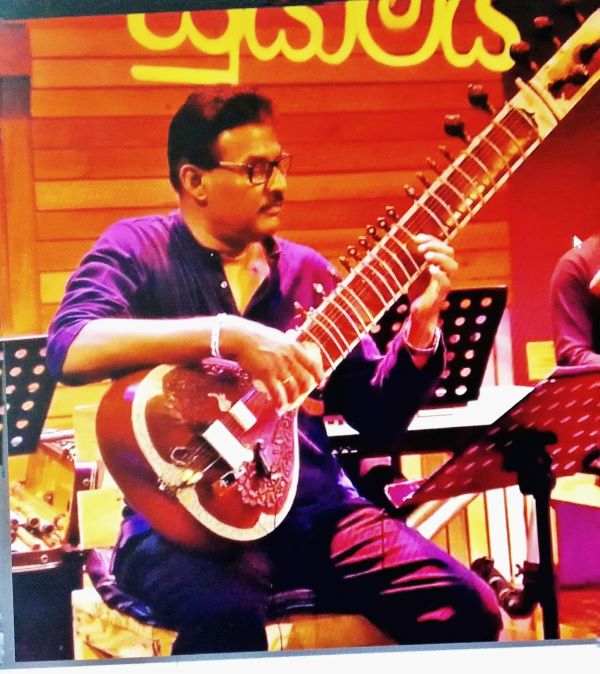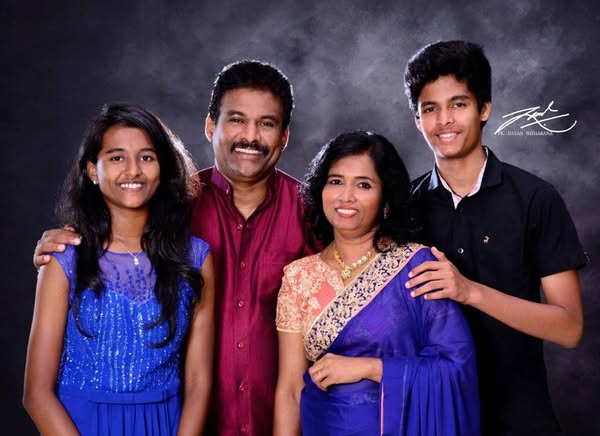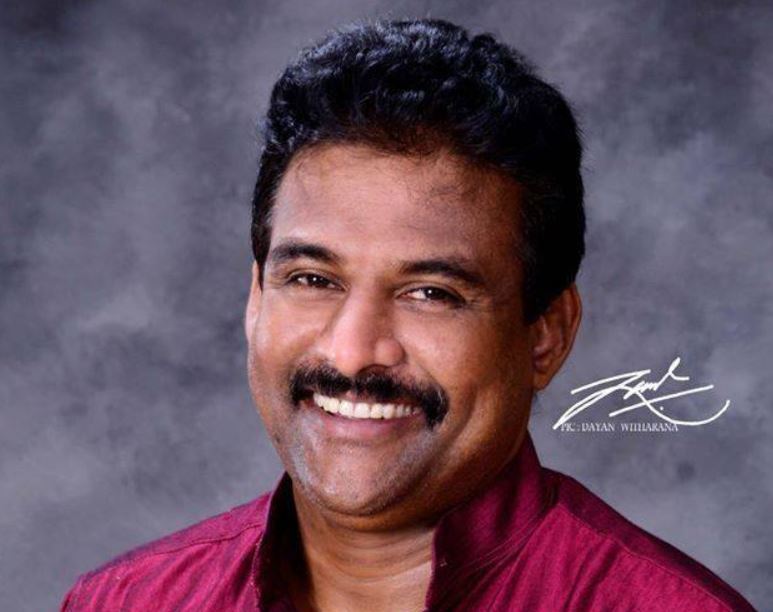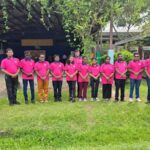SIDATH SOMASUNDARA THE UNSUNG HERO IN MUSIC, LEADER OF SLBC ORCHESTRA POSSESSING UNASSUMING PERSUITS – By Sunil Thenabadu

The Sitar named initially as ‘Setar” is a plucked four stringed instrument originated from the Indian subcontinent used predominantly in Hindustani classical music The instrument was invented in the 18th century, and arrived at its present form in 19th-century by. Khusrau Khan, an 18th-century figure of the Mughal Empire has been identified by modern scholarship as the inventor of the sitar. According to most historians, he developed the sitar from the ‘Setar”, an Iranian instrument Used widely throughout the Indian subcontinent, the sitar became popularly known in the wider world through the works of Ravi Shanker beginning in the late 1950s and early 1960s. The advent of ;oud culture during the mid-to-late 1960s set a trend for the use of the Sitar in western popular music, with the instrument appearing on tracks by bands such as ‘Beatles’, ‘The Rolling Stones.’ and many others A sitar can have 18, 19, 20, or 21 strings; 6 or 7 of these run over curved, raised ‘frets’ which are played with strings; the remainder are sympathetic strings, running underneath the frets and resonating in symphony with the played strings. These strings are generally used to set the mood of a raga at the very beginning of a presentation. The frets, which are known as ‘thaat’ are movable, allowing fine tuning. The played strings run to tuning pegs on or near the head of the instrument, while the sympathetic strings, which have a variety of different lengths, pass through small holes in the fretboard to engage with the smaller tuning pegs that run down the instrument’s neck .There are two types of ‘Sitar’s in Sri Lanka one is the ‘Tharas Sitar’ , the other non Tharas primary Sitar.Sidath recollects that in the good old days it was a cumbersome process to tune the ‘Sitar but currently with advanced technology the tuning process is abrupt .
Visharada Sidath Somasundera who currently leads the SLBC orchestra The SLBC orchestra has received state recognition for its captivating tunes and playing style, again and again showed that they can compete with any other reputed orchestra. The SLBC had launched a CD’s as well to mark the occasion of several anniversaries Ayubowan, of the Sri Lanka broadcasting Corporation Sinhala Commercial Service the pioneer and still the most popular radio channel has celebrated annually with melodies that linger and famous voices that linger, despite competition from about 40 other private channels, the SLBC’s affectionate “Velanda Sevaya” which broadcasts even to the smallest village in the remotest parts of Sri Lanka had conducted jubilee concerts at the SLBC auditorium to mark the anniversaries. Many veteran singers have been lined up for the anniversary show to the amazing music compositions provided by Sidath Somasundara with the SLBC orchestra. the channel has grown in popularity and prestige by providing entertainment, knowledge, education, awareness and by promoting positive attitudes among the listeners. Among its novel and creative programs are “Sara Praba Gira”, “Radio Column”, “Ma Kemathi Jothi Gee”, “Malathi Latha” and “Man Nuwanakkari”. “Madu Rasanga”, “Listeners request Programme”, “Handa Mama”, group songs “Nivedaka Thorai” and “Baila Ghee” are among the popular sponsored programmes for decades to which the contributions made by Sidath is reminisced.
Sidath was born in Galle initially selected to ‘Ruhunu Sevaya’ of the SLBC in 1986 returned to SLBC in 1987 remains today for thirty seven years uninterrupted as the head of the orchestra Sidath had commenced his illustrious music career while in school; Richmond College Galle under the musician departed Kalabushana WAJayantha Sirisena who had been instrumental in making many as competent performers in the annals of our narration like Praneeth Saranga his brother now in the SLBC orchestra , his father and many others. Sidath had commenced playing the ‘Violin’ as in that era instruments like the ‘Sitar’ was not even was seen as it was an luxurious item unlike for the present day generation who could view it, buy and learn to play it.It was her elder sister who had owned a violin which she had abandoned after a few years. It was that violin that Sidath had learned to play initially .It was his teacher Kalabushana WA Jayantha Sirisena who had proposed to Sidath to learn the Sitar instead of the violin. Sidath believed that his guru would have known the knack for music intuitions which Sidath had possessed within him all innate abilities. As Sidath could not afford to purchase a Sitar with the instrument belonged to the school orchestra he was allowed to practice, which was a gigantic gesture. Sidath recollects as all know the instrument is very bulky even transporting in buses was a hassle on many occasions the bus crew had refused him to be taken as a passenger. Sidath reminisces carrying the Sitar walking along the railway track to Master’s dwelling to learn playing the Sitar during week ends.It was his guru Jayantha Sirisena who obtained the assistance of young Sidath for small occasions like in Daham Pasel prize distributions, welcoming functions etc, which he undertook for sharing music At that time the ‘Sitar’ players were very scarce.

Sidath recollects while he was young there had been a demand for functions like new year functions, variety purposes in ‘Daham Pasel in temples for which he had received trivial payments like Rs 5 and Rs 10 ( the Buddha Jayanthi coin).Sidath had been very fortunate as his ‘Guru’ used even to invite him for recordings where only veterans had participated. Sidath reminisces as the youngest in the group had played the ‘Sitar” parts entrusted to him to precision. Such recordings he recalled were played over the entire night until they heard sound of birds in wee hours of morning. The meagre amounts he received for travelling, Sidath had saved them by walking to and from his dwelling. After Sidath had learned from ‘Guru’ he had introduced to another expert musician of the ‘Sitar’ Guru Professor Piyasiri Nanayakkara in Weligama area who had taught him giving accommodation and meals too at this dwelling Sidath recalled that his train fare from Galle to Weligama was Rs 3 but had to walk seven kilometres too from the station As once Sidath returned to SLBC as it was difficult to travel to Weligama for classes the ‘Guru’ had introduced to another ‘Sitar’ teacher DC Dewage to teach him further via which Sidath had successfully accomplished his ‘Sitar’ Visharada degree.
Sidath while in school had triumphed on the sly,dishonestly the prohibited national music exam for students in the first two parts However Sidath had not totally neglected his studies though his father had pressured him. Just after his ordinary level which he had overcame only marginally, an advertisement had appeared for young musicians at the ‘Ruhunu Sevaya’ of the SLBC which his father had enlightened him on. During the tenure at school on the sly Sidath had completed two parts of the ‘national music exam’ for which he had possessed certificates for submission Also while in school Sidath had triumphed in at ‘solo’ music performers at all island level school competitions organized by Universities . With these certificates Sidath had sent his application to Rajarata Sevaya of the SLBC in year 1986 where he was an automatic choice for selection as a relief performer. Sidath believes that his selection may have attributed as he was a competent ‘Sitar’ player also as there were a vast scarcity of exponents of the ‘Sitar’ Those in the panel comprised of legends then, Professor Dayaratne Ranathunga, renowned musicians Somadasa Elvitigala and DR Peiris. However the Ruhunu Sevaya was terminated temporarily within a year, when Sidath was moved to SLBC in 1987 as a relief Sitar player.When Sidath arrived to SLBC he was horrified and frightened seen the members of the orchestra amounting to about sixty all stalwarts who had seen predominately on television like Anthony Surendra, Hamapala Gallage,Somapala Ratnayake and others .Sidath has reminisced that when he sat for a recording initially, he had become nervous as he was performing with skilled and well renowned players. Sidath recollected about arguments too with seniors like AJ Careem Master who was the ‘Clarinet ‘player’ who had compromised Sidath when he faulted that he will play his ‘Sitar” parts too though it was impossible to substitute with his ‘Clarinet’
Sidath in a television dialog recollected that in 1975 he had accompanied his family members to watch Victor Ratnayake’s SA concert when he knew nothing about music could only recollect that he had been thrilled when a Buddhist song was sung a large depiction of Lord Buddha was reflected on a screen in the rear. However after joining the SLBC orchestra he had elevated to unprecedented tall elevations had been invited to play the Sitar for the ‘SA music concerts having studied and played initially second fiddle to under SLBC ‘s senior ‘Sitarist’ YM Sumanasiri. Sidath had been fortunate to be a part in the orchestra of the SA concert too having participated in concerts locally and in overseas countries like USA and Canada.Hence Sidath via his aptitude in playing the Sitar has received many similar opportunities for many famous musical concerts Sidath had been fortunate to perform along with many stalwart musicians like Dr Premasiri Khemadasa, Stanley Pieris ,Sarath Alwis, Ernest Soyza, Rohana Weerasinghe etc Sidath has over the years participated in many music programs to delight music followers.’Esala Tharupaana’ an evening of music renditions by Dr Victor Ratnayake,Visharada Amarasiri Peoris.Visharada Niroshi Virajini was performed in the Nelum Pokuna , the music was by the SLBC orchestra under the leadership of Visharada Sidath Somasundera.This concert was organized by the Colombo Magistrate-courts Lawyers Association to promote good music with viewers given the opportunity to participate in short discussions

Sidath’s contribution to music could be reminisced further, having participated in Dr Premasiri Khemadasa’s“Manasavila”, .”Kankthawa”. the musical concerts of Visharada Gunadasa Kapuge amd Visharada Malini Bulathsinhala titled “Gee Sisilaya”. Nanda Malini’s “Swetha Rathriya”, Yamuna Vinodini’s Esuru Senin” while conducting the music had contributed largely with his competent “Sithar” dominance. In addition Sidath had directed in many “Gee Mathaka” a series pf music programs in TV Derana.Sidath was entrusted to direct music in the SLRC program “Sonduru Suyamaya “ a two hour probing program to facilitate past vocalists and musicians sponsored by the Ms Darley Butler Co Ltd.
Sidath had provided music by directing too for the short Indian film “Nihanda Lipiya’ directed by Kamal Adararachchi.It need to be recollected that for the Mahaweli Authority produced documentary film “ Mahaweli Yali Pibidei”in which music was of Sidath also he is credited for directing music for the teledrama “Thimira Giri’ also directed the music more recently concluded teledrama “Apeksha”. Sidath had composed music melodies for many popular artistes like Sunil Edirisinghe , Edward Jayakody, Karunaratna Divulgane,Rohana Bogoda,Chandana Liyanarachchi,Jagath Wickremasinghe,Nelu Adikari, Priyanath Ratnayake, Shashika Nissansala,Dayan Vithana and even to novice “Kalpana Kavindi’ The song Sidath composed to Dayan Vithana was “Buduguna Padayak Wage Suwadai”.In year 1987 Sidat was bestowed at the “Vishwashimi awards ceremony with an award for his interpretations to music during the past three and a half decades of dedicated service.to SLBC orchestra

Sidath is an unsung humble down to earth hero in the music arena in Sri Lanka married wife Nimali Abeysiriwardena also a music enthusiast could play the Sitar is an Attorney at Law by profession attached to the supreme court, while son Anupa 25 years old is qualified as a IT specialist works in reputed firm while daughter Asini 23 years old is an undergraduate in the Colombo university. Both son and daughter have completed music Visharada degrees The family live at their own dwelling in Malabe.All followers would no doubt would wish Sidath Somasundera to continue to contribute his music instincts in the same inimitable style.
Sidath could be contacted vis WhatsApp +94714473293
Sunil Thenabadu E mail sthenabadu@hotmail.com whatsapp 0061444533242
Read more from Sunil Thenabadu






















